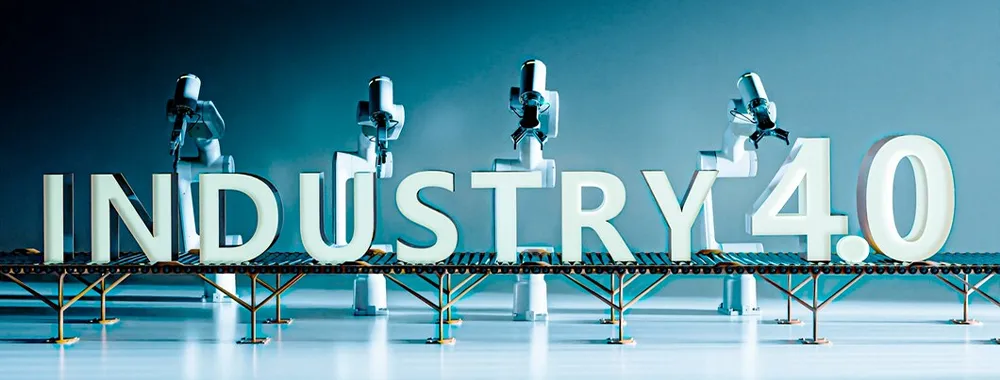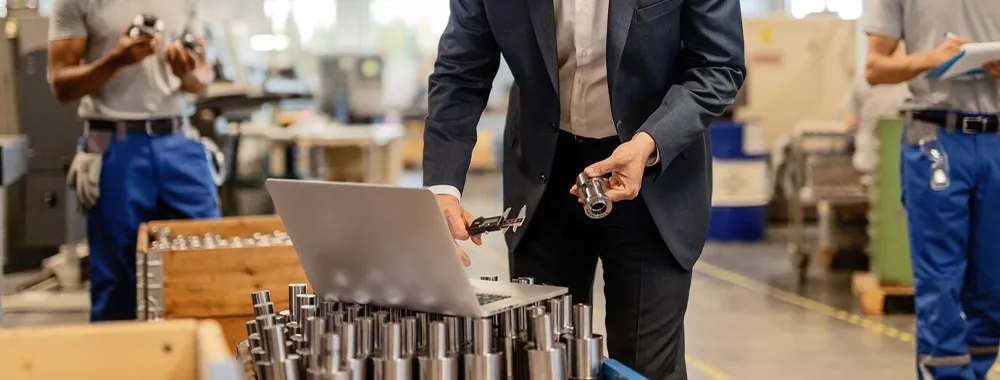IoT in Advanced Manufacturing: from Lean Manufacturing to Industry 4.0
A digital transition is redefining the manufacturing landscape by shifting the axis from Lean Manufacturing to Industry 4.0, thanks to the integration of the Internet of Things (IoT). The integration of this advanced technology represents one of the most important and impactful evolutions of the moment.
Understanding this aspect is a necessity for entrepreneurs and managers, in order to promote business development and growth.
Contrary to popular belief, IoT integration is not a daunting task. Thanks to innovative and ready-to-use solutions, these technologies can be implemented with limited investments and without the need for specialized human resources dedicated exclusively to this task.
But what does it really mean to move from Lean Manufacturing to Industry 4.0? And what role does IoT play in this transformation?
Lean Manufacturing
Lean Manufacturing, born in Toyota factories in the 1950s, has revolutionized the approach to industrial production. Its key principles have allowed companies to optimize processes, reduce costs and waste, improving the quality of work.
This approach laid the foundation for more efficient and flexible production, introducing key concepts such as:
- Just-in-Time (JIT):produce only what is needed, when it is needed and in the necessary quantity;
- Kaizen:continuous improvement through small, incremental changes;
- Value Stream Mapping:value stream analysis and optimization.
James P. Womack and Daniel T. JonesThey codified Lean Manufacturing in 5 fundamental principles:
- Creating customer value;
- Value Stream Mapping;
- Implementation of a continuous flow;
- “Pull” production system;
Continuous improvement.
From Lean Manufacturing to Industry 4.0
Industry 4.0 represents the natural progress of industrial production, characterized by the integration of advanced digital technologies in production processes. This evolution does not replace Lean Manufacturing, but enhances it in efficiency and automation.
The key elements of Industry 4.0 are:
- Interconnection of machines and systems;
- Real-time data analytics / Big Data and predictive analytics;
- Advanced automation and robotics;
- Cyber-physical systems;
- Cloud Computing;
- Artificial Intelligence and Machine Learning.
The convergence between Lean Production and Industry 4.0offers new opportunities for the optimization of manufacturing processes, combining the efficiency principles of Lean with the potential of digital technologies.
Both paradigms emphasize efficiency and waste reduction, but Industry 4.0 amplifies these benefits through automation and real-time data analytics.

The role of IoT in Enabling Industry 4.0
The Internet of Things is a key pillar of Industry 4.0, enabling devices, machines and systems to connect and communicate with each other to exchange data in real time and enable autonomous and intelligent decision-making.
According to an analysis by Gartner, it is expected that by 2025, over 75 billion IoT devices will be connected globally, with a significant presence in the manufacturing sector.
Implementing IoT in manufacturing offers tangible benefits, including predictive maintenance and production optimization based on real-time demand:
- Real-time data collection from sensors and devices;
- Continuous monitoring of machinery performance;
- Data-driven process optimization;
- Creating “digital twins” for accurate simulations and forecasts.
Practical Applications of IoT in Advanced Manufacturing
IoT technology allows for real-time data collection along the entire production chain, offering concrete benefits:
- Full visibilityon production lines and continuous monitoring of machine performance;
- Real-time controlproduct quality, with immediate interventions in the event of deviations from standards;
- Rapid production adaptationto changes in demand and large-scale product customization;
- Predictive maintenanceto reduce downtime and prevent failures;
- Supply Chain Optimization, from product lifecycle monitoring to intelligent inventory management.
Industry 4.0 is based on several enabling technologies that transform production processes, such as collaborative robots, augmented reality, IoT in manufacturing, also called Industrial Internet of Things (IIoT).
The Industrial Internet of Things refers to the network of interconnected devices that collect and exchange data within the manufacturing environment, including: sensors on machines and production lines, RFID tracking systems, wearable devices for operators, and automated quality control systems.
IoT technology therefore allows for the collection of real-time data from machinery and sensors distributed along the production chain, offering concrete benefits:
- Complete visibility into production lines and continuous monitoring of machine performance;
- Real-time control of product quality, with immediate intervention in case of deviations from standards;
- Rapidly adapt production to changes in demand and customize products on a large scale;
- Predictive maintenance to reduce downtime and prevent failures;
- Supply chain optimization, from product lifecycle tracking to intelligent inventory management.

Resistance to change
The transition to Industry 4.0 in the manufacturing sector is faced with a series of changes perceived as “obstacles” which become a real resistance to cultural/organizational change.
Change, although necessary to avoid degenerating into physiological recession, puts at risk consolidated processes and cultures, even if now obsolete, but so rooted as to resist innovation and the reorganization that comes from it.
The major IoT-related concerns for businesses are:
- Integration of legacy technologies not compatible with IoT;
- Lack of digital skills in the workforce;
- Initial implementation costs;
- Concerns about data security and cybersecurity.
However, with the right approach and adequate solutions, these obstacles are absolutely avoidable.
How to approach the transition to Industry 4.0 and IoT
Before embarking on any IoT initiative, it is advisable to conduct a comprehensive audit of existing infrastructure and processes, but also identify the areas of greatest potential impact and develop a clear roadmap with defined milestones and objectives.
Iterative, scalable and collaborative approach
IoT implementation doesn’t have to be an “all or nothing” process. A phased approach can reduce risk and demonstrate value over time:
- Start with pilot projects in critical areas
- Measure and communicate results regularly
- Scaling successful solutions incrementally
To enable all of this and address the transition to Industry 4.0, collaboration and openness to creating partnerships with technology providers and system integrators is often essential.
At Logbot, we have been accompanying companies in every phase of the transition since 2020, offering strategic consultancy and complete technical support, as well as our IoT solutions for businesses, Cloud-based and ready to use to implement IoT without any complications.
As we tell in the case studies published on this page, companies that have integrated IoT with Logbot, have eliminated the need to invest in expensive internal IT infrastructure or hire internal resources or experts, as the learning curve for using the technology is reduced; integrated security protocols to ensure the protection of sensitive data and compliance with regulations.

